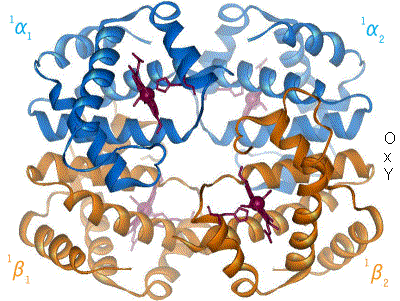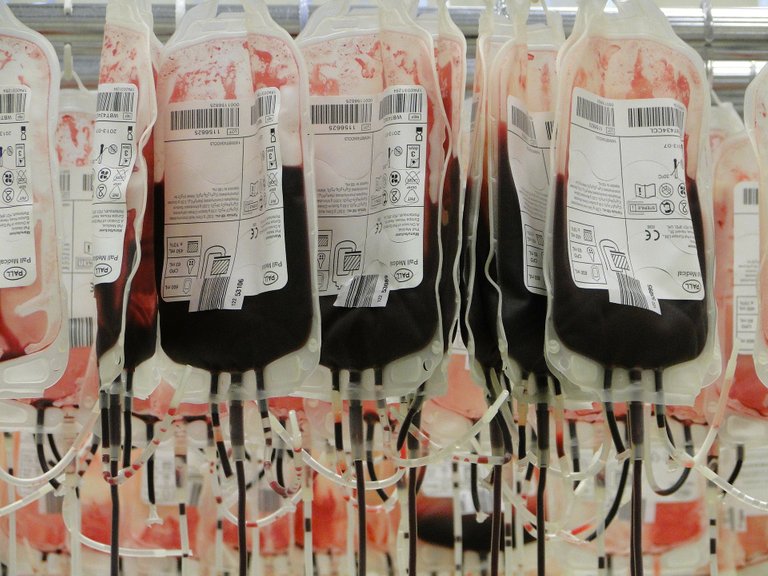
Source

The objective of this post is to provide information about the importance of paying attention to anemia from the clinical point of view both for its timely treatment as well as to be diagnosed early by medical specialists, in the event of chronic associated pathologies to anemia.
What is anemia?
According to Perez-Requejo, anemia is the reduction or reduction in the number of erythrocytes, as well as the values of hemoglobin contained in them, below the normal values for the age and sex of the patient, which produces a decrease in the ability to transport oxygen in the circulating blood.
According to the World Health Organization (WHO) those considered normal for both the normal adult male (14-16g / dl) for the adult female is (13.3-15 g / dl). Therefore values lower than 12gr / dl for women and 13 g / dl for men are considered anemic.
Source
When does anemia occur?
- When the body produces too few red blood cells
- There is destruction of too many red blood cells.
- There is a loss of too many red blood cells.
Source - In some cases due to genetic factors (mutations in the genes with changes in the hemoglobin molecule).
What are the symptoms of anemia?:
a) There are respiratory and circulatory symptoms, such as difficulty breathing, palpitations, evident fatigue after exercise, strong pulse and heart murmurs.
b) You can visualize the pallor of the skin and mucous membranes, loss of shine in the hair and weakness of the nails
c) Headache and dizziness, abdominal and intestinal discomfort.
Source

How is anemia diagnosed?
A complete hematology is mandatory for the diagnosis of anemia, with special attention to the determination of parameters such as red blood cell count, hemoglobin and hematocrit, mean corpuscular volume, mean corpuscular hemoglobin concentration (in the case of anemia due to iron deficiency, they are diminished).
To do this, it is necessary to take a blood sample by the venipuncture technique in a tube with anticoagulant (purple cap tube with ethylenediamine tetraacetic acid, EDTA) as shown below:
Ok! We go on the part, we better clarify the concept of Hemoglobin.
Hemoglobin:
Erythrocytes or red blood cells contain hemoglobin at saturation, hemoglobin is a tetrameric protein that consists of four polypeptide chains (globins) with different primary structures and a HEM group in the center of the molecule which contains the iron that will bind with the oxygen. Source.
__

Source
How is anemia treated?
1.-The anemia can be treated from different points of view, either with a diet rich in iron, consuming red meats, vegetables and vegetables (Swiss chard, spinach, watercress) red fruits such as strawberries and cherries, and others such as blackberries and pomalacas, as well as nuts (such as almonds and nuts) and some sea products such as mussels.
2.- Administration of medicines such as iron (in capsules or intravenous, depending on the requirements of the patient) or erythropoietin (stimulants of the bone marrow).
[Source] (https://onlinelibrary.wiley.com/doi/abs/10.1034/j.1600-0609.2000.9r116.x)
3.-Blood transfusions.
4.-Surgery.
But is anemia really a definitive diagnosis or only a physiological response of the human body in the presence of some chronic pathology?
Conclusions:
The answer to this question will depend on the inquiry made by the doctor and the results of different tests. Something very important to take into account in each particular organism is that once the anemia does not seat after nutritional treatment, nor place to the pharmacological treatment possibly the specialist doctor suggests the accomplishment of other exams or special tests like flow cytometry, gastroscopy or colonoscopy, a biopsy of the bone marrow (depending on the behavior of the bone marrow with respect to the production of precursor cells of red blood cells) will allow you to make decisions regarding the treatment, it should be noted that ultrasound exams may be required to rule out the presence of tumors, and in some cases, genetic tests.
We must take into account that there are multiple pathologies associated with the appearance of anemia, such as chronic kidney disease, intestinal hemorrhages, myelodysplastic syndromes, leukemia, bone tumors, cancer and those that have to do with enzymatic deficiencies or abnormalities of the membrane erythrocyte, as well as those related to autoimmune processes.
Source
Due to the fact that anemia can occur due to multiple causes, the correlation with the patient's symptoms and condition is important: the maintenance or not of their body weight, the coloration of the mucous membranes, muscle or bone weakness, the presence of symptoms respiratory symptoms associated with fatigue, or cardiovascular (tachycardia); all this with the intention of compensating the patient with emergency or preventive treatment, such as blood transfusions or surgeries, if that were the case.

Fuente

References:
NHLBI Health Information Center (NHLBI Health Information Center). NIH Publication No. 11-7629AS. P.O. Box 30105. Bethesda, MD 20824-0105, at: www.nhlbi.nih.gov/health/infoctr/index.htm
Erslev, A, j. Clinical manifestation of erytrocyte disorders. In: Williams, W.J .; Beatler, E. Erslev, A.J; Lichtman, M.A. (Eds) Hematology.4th ed. Mc Graw Hill Inc., New York, 1990, 423-429-
Erslev AJ. Erythropoietin and anemia of cancer.Eur J Haematol 2000: 64: 353 ± 358. # Munksgaard 2000.
Perez-Requejo, J. L. Hematology. Volume I. Editorial Disinlimed, C.A. nineteen ninety five.

Congratulations @alexasteemit! You have completed some achievement on Steemit and have been rewarded with new badge(s) :
Click on any badge to view your own Board of Honor on SteemitBoard.
To support your work, I also upvoted your post!
For more information about SteemitBoard, click here
If you no longer want to receive notifications, reply to this comment with the word
STOPThank's so much.